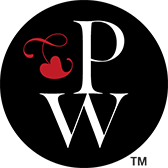Shawn Harris earned a 2022 Caldecott Honor for Have You Ever Seen a Flower?, and provided the forested scenery for Dave Eggers’s The Eyes and the Impossible, which won the 2024 Newbery Medal. With his childhood friend Mac Barnett, he co-creates the First Cat in Space graphic novels, and his solo outings range from meditative to humorous. His new picture book, Let’s Be Bees, puts a bearded man in rollicking conversation with a brown-haired child as the two transform into animals and natural phenomena such as wind and waves. Harris spoke with PW about interactive readings, how to quiet a raucous audience, and the appeal of working in crayon.
How did the idea evolve for this game of “let’s pretend”?
My editor, Taylor Norman [now editorial director at Neal Porter Books], worked on Have You Ever Seen a Flower? with me while she was at Chronicle. We have a check-in dinner every six months or so, and I had this concept—“Let’s Be the Earth” was my placeholder title—for a classic barnyard-animal sound book, where elements from the natural world have been incorporated. I was pitching the idea as “let’s be rocks or let’s be trees.” And Taylor immediately was like, “Bees. Let’s be bees.” It was a stroke of genius, with that inherent wordplay, the repetition of the homophone in the three-word title. It led me immediately to the pseudo-poetic structure where sometimes I’m rhyming, sometimes I’m being alliterative. That ability to play came from those three words.
Let’s Be Bees is funny, but there’s a deep element, too. How do you incorporate a sense of wonder without getting preachy?
Serious and profound ideas can be reached through playing, and kids do that really well. They play to understand who they are, who they can be, what the world around them is like, what it’s like to be a lion or a princess or whatever. So I wanted to tap into that. When there’s a potentially message-driven subtext, that doesn’t feel as fun.
How do you know that a picture book script is something special, beyond just a pleasing-to-the-eye sequence?
There’s a lot of trial and error. There are concepts where I get to the end of mocking up a dummy and it was fun, but there’s not quite enough there. Maybe I’ll come back to the idea in a year or three and see if my life experience has more to offer. And sometimes when I get to the end of that dummy, it feels complete. Oftentimes big ideas are reached backwards by looking at one little thing and not really knowing if it's going to lead to something with more grist.
As the characters imagine being bees, birds, and trees, the art grows more intense. How did you balance wildness with calm?
When I was working on the illustrations, I asked a friend who’s a kindergarten teacher if I could come do a story time. I read kids my finished books very frequently, but this is the first book I tested on an audience, to see how the language worked without having to prompt them. At the beginning, the characters turn into bees—they’ve got these empty sweatshirts, the bees are flying out—and the room burst into half-laughter, half-shock. They were riveted from then on.
I do remember, when I turned to “Let’s be snow. And silent,” it’s so peaceful, and it comes after the raucous drum roll. I wanted to bring the attention back, almost like the little hand-clap games that every elementary school has. I wanted a reset, because we can’t keep that escalation going. So I turned that page, the room hushed, and I was like, “Yes! That worked.” And in the back of the room, I heard a kid go, “Are they dead?” I thought about it for a while—is it too intense there? This whole thing is very existential, how we’re morphing our bodies. I was like, “Hey, that is not my intention for that spread, but if you read it that way, there are many lives in this book—I’m going to roll with that one.” I always learn so much about my work when I read it.
How did you create the art, which has rough edges and a freshly colored appearance?
All the art was made with crayons. This isn’t a hard-and-fast rule, but I find that I’m speaking the language of my audience when I use tools that they have. Oftentimes I work with different mediums, but when I use materials that kids have at home or at school, it’s fun for them to do an art workshop afterwards. Or it’s fun to ask them if they recognize the materials in which this book was made, and when they do, I notice they like to take those materials and draw with them. And it’s a fun challenge to figure out what my style looks like, working with colored pencils like I did on Have You Ever Seen a Flower? or working with crayons like I did here.
What other projects do you have coming up?
Every year for the foreseeable future, Mac Barnett and I make a First Cat in Space graphic novel. And a couple weeks after Winter Institute, I have The Teeny-Weeny Unicorn’s Great Big Wish [Knopf, Mar.] coming out. I’m also working on another picture book with Taylor, in monopress, where you put paint on one side of the paper, fold it over, and make a butterfly. I’ve wanted to do a book like this since I started making picture books, close to a decade ago, but it took a long time to figure out. That process of discovery is one that I love and savor about making picture books.
Let’s Be Bees by Shawn Harris. Holiday House/Porter, $18.99 Feb. 11 978-0-8234-5709-0





